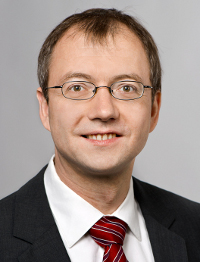Responsibilities
Professor of Audio Information Processing, TU Munich
Contact
Dept. of Electrical Engineering and Information Technology
Theresienstrasse 90
D-80333 Munich
Phone:
+49 (0)89 / 289-28282
Fax:
+49 (0)89 / 289-28211
Email:
seeber@tum.de
Website:
http://www.aip.ei.tum.de
Website:
http://www.bseeber.de
Further Information
Research focus:
- Auditory scene analysis with normal and impaired hearing
- Cochlear implants: Perception and modeling of electric stimulation of the auditory nerve
- Signal processing for cochlear implants and hearing aids and its perceptual impact
- Binaural hearing for sound localization and speech understanding in reverberant and noisy spaces
- Room simulation methods, sound field synthesis
Key words: Auditory perception, computational models, binaural hearing, acoustics, hearing devices
Selected publications:
Horne, C.; Sumner, C.S.; Seeber, B.U. (2016): A phenomenological model of the electrically stimulated auditory nerve fiber: temporal and biphasic response properties. Frontiers in Computational Neuroscience 10(8).
Monaghan, J.J.M.; Seeber, B.U. (2016): A method to enhance the use of interaural time differences for cochlear implants in reverberant environments. J Acoust Soc Am 140(2): 1116–1129.
Seeber B and Fastl H. (2008) Localization cues with bilateral cochlear implants, J Acoust Soc Am 123: 1030-1042.
Kerber S and Seeber BU. (2013) Localization in reverberation with cochlear implants: predicting performance from basic psychophysical measures, J Assoc Res Otolaryngol 14: 379-392.
Wiggins IM and Seeber BU. (2013) Linking dynamic-range compression across the ears can improve speech intelligibility in spatially separated noise, J Acoust Soc Am 133: 1004-1016.
Seeber BU, Kerber S and Hafter ER. (2010) A System to Simulate and Reproduce Audio-Visual Environments for Spatial Hearing Research, Hearing Research 260: 1-10.


